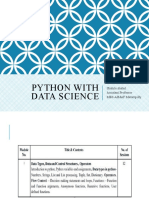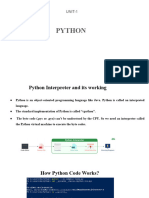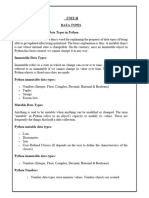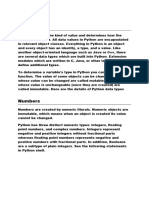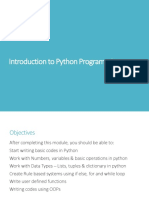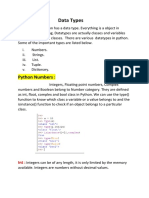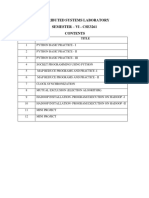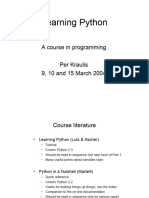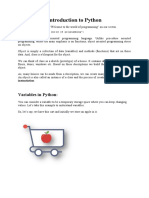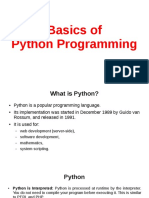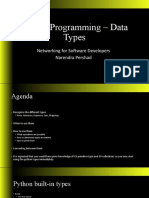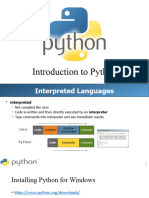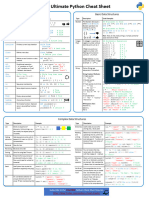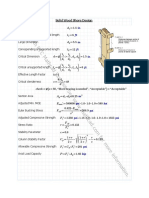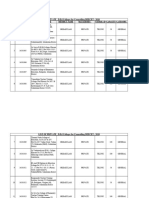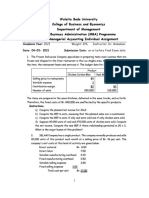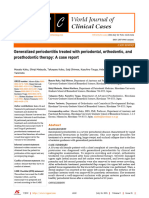0% found this document useful (0 votes)
40 views49 pagesIntroduction
The document discusses various programming languages and then provides an overview of Python including running Python code, data types, input/output, control flow, functions, and uses of Python in scientific computing. It then demonstrates Hello World in Python, describes the Python interpreter, variables, objects, numbers, strings, string methods, formatting, and lists.
Uploaded by
aysuhCopyright
© © All Rights Reserved
We take content rights seriously. If you suspect this is your content, claim it here.
Available Formats
Download as PPT, PDF, TXT or read online on Scribd
0% found this document useful (0 votes)
40 views49 pagesIntroduction
The document discusses various programming languages and then provides an overview of Python including running Python code, data types, input/output, control flow, functions, and uses of Python in scientific computing. It then demonstrates Hello World in Python, describes the Python interpreter, variables, objects, numbers, strings, string methods, formatting, and lists.
Uploaded by
aysuhCopyright
© © All Rights Reserved
We take content rights seriously. If you suspect this is your content, claim it here.
Available Formats
Download as PPT, PDF, TXT or read online on Scribd
/ 49
